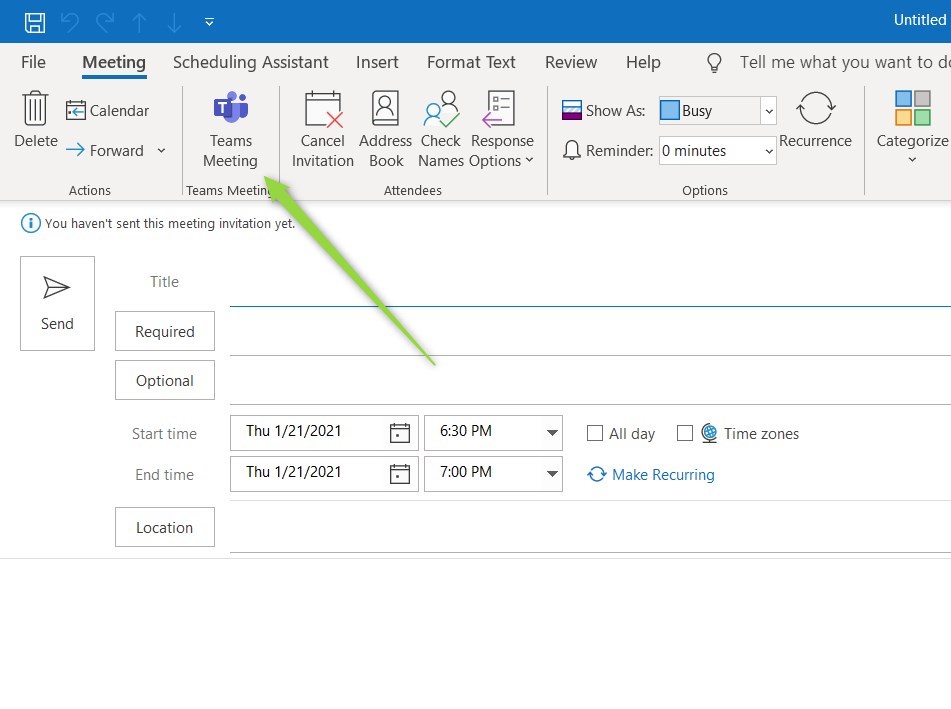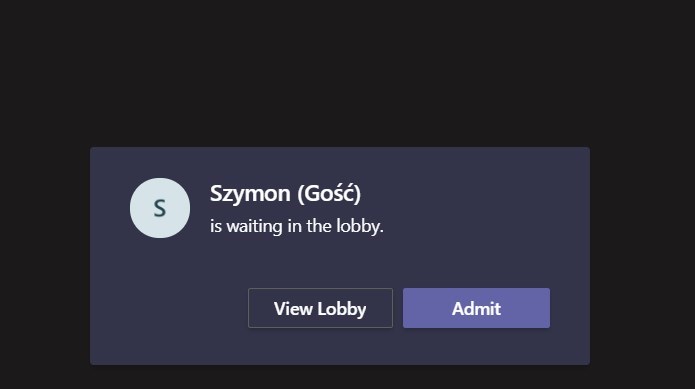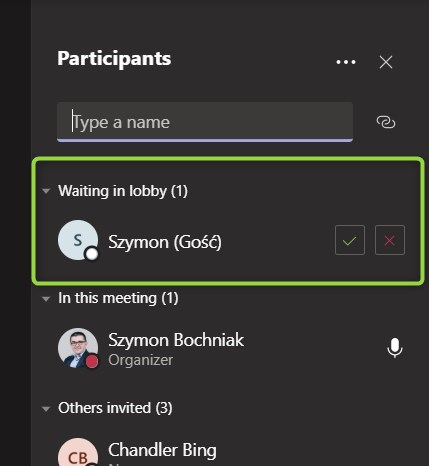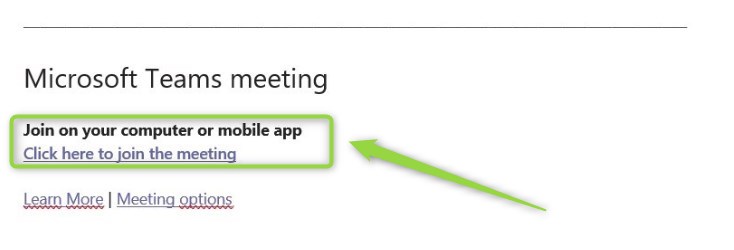Meetings in Microsoft Teams are the native way to organize remote meetings.
Let’s learn how to set up Microsoft Teams meetings, what kind of options are available, and some tips and tricks.
Every big organization needs to set up meetings in Teams or other tool ? That’s a fact. Making the meetings be productive and finalized with the results and decisions could be challenging. In times where remote work becomes something normal for every organization, Microsoft Teams starts to be the basic solution for hosting the remote meetings with video.
In this article, I summarize how to start using Microsoft Team for meeting organization. You will find here guidelines for the first-time newbies in using Microsoft Teams. On the blog, you can find more guidelines for the new users of Microsoft Teams.
Set up Teams meetings
When you are Microsoft Teams first-timer you need to learn how to use it for the organization of the remote, video meetings for your team, department, or company. Thankfully this is quite a simple process. I sum up guidelines about key activities in Teams around meetings.
Create team meeting
Microsoft Teams meeting is a remote meeting organized using the Teams app. Meetings in Team giving you the possibility to connect team members across different locations to join the meetings with audio and video capabilities. Meetings participants can join the call using audio provided by a computer or using call-in services.
Meetings organized via Microsoft Teams offers the possibilities, like:
- discussions with shared audio
- video meetings
- chat discussions
- file sharing
- sharing of the screen or application
- recording the meetings with automated transcription
- breakout rooms
- automated summary of the meetings (this feature coming soon)
How to create a team meeting in Outlook?
Creating the Microsoft Teams meeting in Microsoft Outlook
You can create the meeting directly in your Calendar in Microsoft Outlook. To create the meeting event which will be Teams meeting use the New Teams Meeting button.
You can extend already existing event in you Calendar for the Teams meeting by opening the event and choosing Teams Meeting button.
The creation of the Microsoft Teams meeting in Outlook generates a unique space where you as Organizer and Meeting participants will be able to meet and work together. Every meeting is separated, so always create a unique meeting. If you will copy the invitation link users will have access to the previous materials shared during meetings, like files and chats.
Extended or created meeting event will contain the invitation for the participants to join the Microsoft Team meeting. Invites colleagues will be able to join the Teams meeting using the special link created
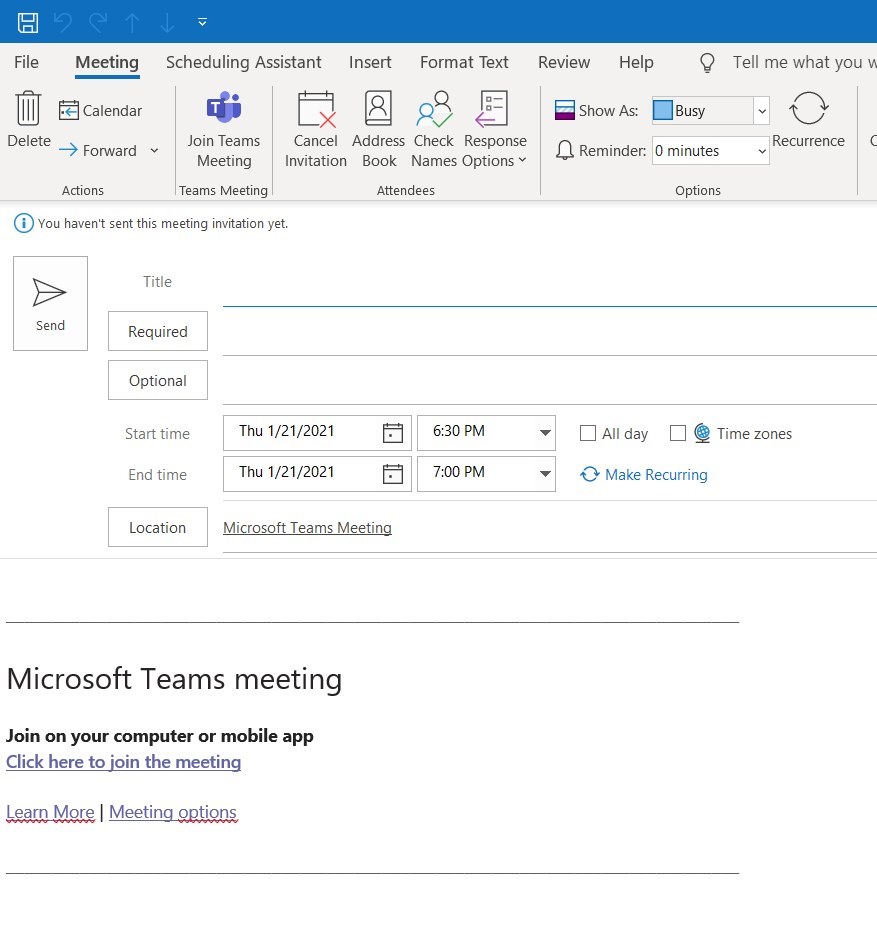
Creating a team meeting in Microsoft Teams
It is also possible to organize the meeting directly from the Teams app. Based on the level where you decide to organize the meeting it will be behaving a little different way.
Scheduled meetings in Microsoft Teams
You can schedule the meeting in Microsoft Teams very similar way to the way how you doing it in Microsoft Outlook. In the Teams app open the Calendar (1) and in the New meeting panel select Schedule meeting button.

You will notice a very similar form for scheduling Microsoft Teams meeting. Additionally, you can add this scheduled meeting to the team channel. This solution works very well when the meeting is prepared for especially for the specific team.
You are able to schedule the Microsoft Teams meetings in Outlook and directly in Teams. Both ways are fine and it depends on your preferences which way you want to use. In my case, I’m using Teams to organize the scheduled meetings only when it is a meeting dedicated for the team working on a project in Teams. In such a case I’m also adding the meeting to the team channel.
Ad-hoc meetings in Microsoft Teams
You can organize the ad-hoc meeting from the level of the Teams channel by selecting Meet icon. In the created meeting, you will need to invite participants manually. You should expect that in such an ad-hoc approach not everyone will join ?
A very similar way can be used for the creation of the ad-hoc meeting call with chat participants. In the chat level just select the audio or video call icon.
Inviting external participant to Microsoft Teams meeting
Microsoft Teams allows you to invite guests from outside of the organization to Teams meetings. Guests you would like to invite for Microsoft Teams meetings do not need to own Microsoft 365 or Microsoft Teams. The only thing that external user needs to join Microsoft Teams meeting is an email address and internet connection.
To invite external guests to the Microsoft Teams meeting just include their emails to the list of attendees of the meeting event or forward them the meeting invitation.
Guests will receive the invitation with the meeting joining link. When the will open the meeting it will be possible to join by using Teams meeting in the browser. It will not be necessary to install any additional components.
Remember that the settings of the meeting could put the external users in the meeting lobby. You Admit guests in the lobby to the meeting from pop-up window.
You can admit guests users using the Participants list. This view presents all users Waiting in the lobby.
After admitting you will be able to communicate with guest users.
Microsoft Teams meeting options
Every meeting created in Microsoft Teams has specific settings set up in the Meeting Options panel. This part of the meeting creation is totally left out by most of Teams users. It is very important to understand what options are available for the Teams meetings.
To get to the settings of your meeting select Meeting options button. You will find this option when you will open the meeting event.
Meeting options in Microsoft Outlook:
Meeting options in Microsoft Teams:
You will be navigated to the browser where the only Organizer of the meeting could change the settings of the meeting.
Microsoft Teams meeting options offer the possibility to configure how meetings should work. Available options for Microsoft Teams meetings:
- Who can bypass the lobby? – In this section, you can decide who should be stopped in the lobby before joining the Teams meeting. Available options:
- Only you – you will need to join first and let everyone in when you will be ready
- People in my organization – you want all external users to wait in the lobby before somebody will let them in.
- People in my organization and trusted organizations – the same scenario to previous one, but users trusted by your organization will be able to skip the lobby
- Everyone – you will not use the lobby feature
- Always let callers bypass the lobby – Enable this feature when you would like to allow people calling by phone to join automatically
- Announce when callers join or leave – By turning it on you will hear alerts when new participants will join the meeting
- Who can present? – In this section, you decide who will be a Presenter during the meeting. Participants with the Presenter role can present and share content during the meeting. Presenter user has also additional rights during the meeting. The rest of the participants will be assigned to the Attendee role.
- Allow attendees to unmute – This option allows you to block Attendees from unmuting themself.
Review these requirements and select the best configuration of the Teams meeting for your needs.
Microsoft Teams meeting roles
From previous paragraphs, you can assume there 3 roles available for the Microsoft Teams meetings: Organizer, Presenter and Attendee. Understanding differences between these roles is important if you would like to customize the configuration of your Teams meeting settings.
In scenarios when you would like to limit possibilities of the invited participants of the meeting, you should make them Attendees.
How to join Microsoft Teams meeting?
Joining the Teams meetings is possible on any device. The only thing you will join the call is the invitation hyperlink. You will join the meeting link in the Microsoft Teams meeting invitation email. Just open it and you will be asked to switch to Microsoft Teams.
If for some reason the link in the email is deleted (which happened often than you think ? ) you join the meeting using Join Teams Meeting button presented in Outlook Calendar.
When you will select the Join Teams Meeting link or button you will be navigated to the landing page of the meeting. You can decide there to open the meeting in Microsoft Teams or to join the meeting using your browser. All modern browsers except Internet Explorer 11 support the possibility to participate in Teams meeting via a browser. The functionality of the web-based Teams app is almost the same as the Client version.
You don’t need Teams Client application to use Teams.
Microsoft Teams meeting invitation emails will also contain a dial-in number that allows calling into the Teams meeting. Remember that Dial in feature of Teams requires additional licenses.
Using Microsoft Teams meeting
In the last step, you will join the Teams meeting with your team. You will be able to find a lot of great features during the Microsoft Teams meeting. Probably most of them you will miss, because of not a super-optimized user interface.
Base features of Teams meetings
The key functionalities that you will find in the meeting panel are:
- Participants – allows managing meeting participants, mute them or change their role in the meeting.
- Chat – chat space where you can discuss with meeting participants using text and share additional files
- Rise hand – a new function that allows sending the visual signal to the Presenter that you would like to ask a question to say something. When you will rise hand this will be visible on the participants list
- Breakout room – very fresh feature that allows moving users to breakout rooms during long event
- Start / Stop video – stream your video to the meeting
- Mute / Unmute – 🙂
- Share – a button that allows you to share your screen, whiteboard, apps etc.
- Leave – This is the button that allows you to leave the meeting or close the meeting by – End meeting option.
Additional features of Microsoft Teams meeting
Optional icon (***) navigates you to additional advanced options of the meeting:
- Device settings – select devices on your side chosen to provide video and sound.
- Meeting options – additional space where you can setup the configuration of the meeting.
- Meeting notes – You create dedicated Wiki-like notes for the meeting that will be shared with participants.
- Meeting details – Meeting descriptions set during event creating. You will also find here a join link to the meeting.
- Section connected with managing custom background for the Teams meeting. You can learn more about this option in a dedicated article that focuses on background effects in Teams.
Turn on the live caption of Teams meeting
This is a totally missed function of Teams that allows generating live caption of the audio discussion. It supported only in English. Worth remembering about this function.
The caption will be presented on the screen but will not be saved in any kind of file.
Recording of the Microsoft Teams meeting
It is possible to record the meeting as a video file. Button Start recording meeting will execute recording process. You can stop the recording process in the advanced option panel. WHen you will leave the meeting recording will be also stopped.
Videos are saved in Microsoft Stream. The stream will need few minutes to render the video, save it and share it with participants of the meeting.
Storing files in Stream allows generating automated transcription of the meeting, supported in English. When you will open the video file in Stream you will have the possibility to download the automated transcription of the Microsoft Teams meeting.
Microsoft Stream will also allow you to download the recorded meeting video.
Microsoft Teams meeting limitations
Main limits of the Microsoft Teams meetings you should be aware of:
- Limit of the people attending / participants of the meeting – 300
- Limit of the PowerPoint file size – 2GB
- Meeting expiration – 60 days
Conclusion
Set up Microsoft Teams meeting. Learn how to create a team meeting in Outlook and Microsoft Teams.





